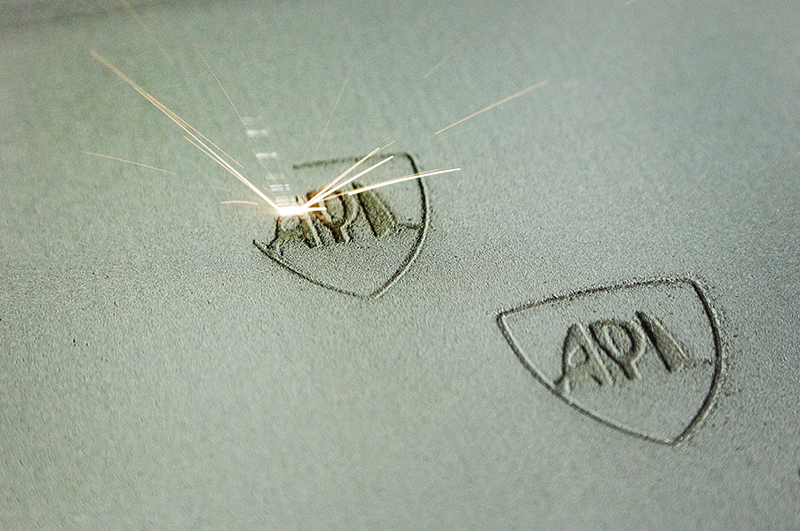Press Release
Finer Flaws: Exploring the Advantages of Defects in Laser Manufactured Materials
Metal additive manufacturing (AM) promises to revolutionize the way we produce and use certain parts. Reducing material waste and labor time, metal AM simplifies the steps for creating complex geometry parts when compared to conventional manufacturing methods.
However, hundreds of very small defects (~10-50 micrometers, one-tenth to one-third the diameter of a human hair) can arise during the process, presenting a challenge when it comes to guaranteeing confidence in the structural performance of the product. The engineering impact of these defects is not well understood; and, in a field where certifications and standards reign supreme, it is difficult to field these parts because of the lack of processing data and standard protocols.
Researchers at the Johns Hopkins Applied Physics Laboratory (APL) in Laurel, Maryland, set out to better understand the influence of different defects on the mechanical performance of AM materials. In “Uncovering the coupled impact of defect morphology and microstructure on the tensile behavior of Ti-6Al-4V fabricated via laser powder bed fusion,” published recently in the Journal of Materials Processing Technology, they provide data to help understand the effects of defects and enable decision-making.
One method of building metal AM parts is selective laser melting, a process that melts and fuses metallic powders using laser energy. “Laser powder bed fusion is a dominant additive manufacturing technology that has yet to reach its potential,” said corresponding author Steven Storck, a mechanical engineer in APL’s Research and Exploratory Development Department (REDD). “The problem is that tiny bubbles or pores sometimes form during the printing process, and these pores create uncertainty in strength or performance in areas of the finished products.”
There are two natural types of processing defects: lack of fusion and keyhole. The former occur when there is not enough energy to completely melt the metal powder bed; keyhole defects happen when excessive energy density forms a fluid dynamic instability in the molten powder bed. As the energy density deviates above or below the optimal levels, the quantity and size of the defects increase.
Storck, along with REDD co-authors Timothy Montalbano, Salahudin Nimer, Christopher Peitsch, Joe Sopcisak and Doug Trigg, and Brandi Briggs and Jay Waterman from the Naval Air Warfare Center Aircraft Division, deliberately introduced both types of defects into samples to determine how they influence the parts’ mechanical properties.
Results showed that while high amounts of each type of defect are unfavorable, it is more favorable to be in the keyhole domain — at a similar concentration of defects — than in the lack of fusion domain. The team also discovered that microstructural refinement around a keyhole defect can counteract the weakening effect of the defect. Even up to 4-5% porosity in the keyhole domain results in the same yield strength as a part with negligible porosity, a target metric many mechanical engineers use to design parts.
“We modified the laser processing conditions to simulate natural faults in the process and generated three similar amounts of defects in the keyhole and lack of fusion domains,” Storck explained. “Then, we scanned and quantified material from each processing condition using X-ray computed tomography to map the defect size and distribution, and compared samples containing these resultant defects in monotonic tension testing to determine the preferred defect domain for a given amount of defects.”
This research was part of APL’s ongoing efforts with the Naval Air Systems Command to understand the effects of defects in additive manufacturing. “Our current research is now using this finding combined with machine learning to rewrite the way we process materials with laser melting,” Storck said.
“This work is a critical step in laying the foundation to enable qualification of AM parts in the future,” added Morgan Trexler, who manages REDD’s Science of Extreme and Multifunctional Materials program. “A general understanding of the influence of the effects of processing conditions on the resulting microstructure and properties of a material and component will provide the scientific basis to enable protocols for safe implementation of additively manufactured parts.”
